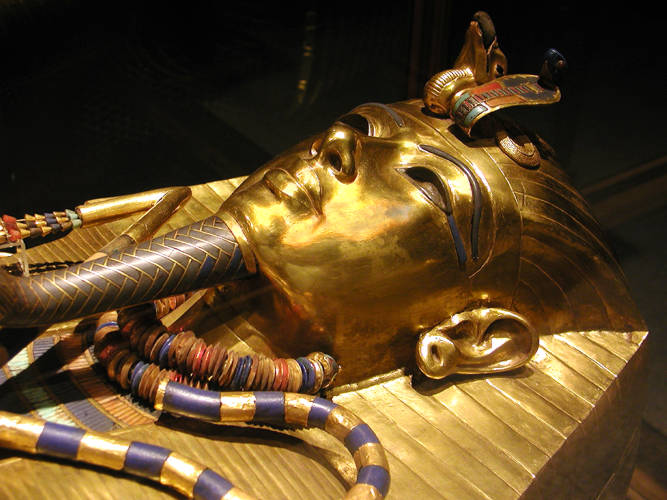Egyptian Jewelry
Today in our blog we’d like to look back at a prominent part of history of jewelry in the context of a culture as complex and captivating as that of ancient Egypt.

As early as in the pre-Dynasty era (Upper Egypt 4400 BC) we can already find simple pendants with elements taken from the nature itself – like fangs, bones, stones and small shells – decorated with simple golden parts giving them a new lease of life with their refined appearance.
Through the centuries the development of Egyptian manufacture of jewelry reached its maximum splendor towards the years 1580-1085 BC.
Similar to other cultures, ornamented objects were used not only as indicators of wealth and status of their owner, but also acquired magical values such as amulets of protection, and were used for religious representation as well. Ancient Egypt seemed to have passion for jewelry, and amulets were a good excuse to wear more jewelry.

Materials such as gold were initially extracted in southern Egypt from the dry river courses; not until the end of the 3rd century BC had massive import of gold started from what was formerly called Nubia in present-day Sudan.
Stone glasses made by craftsmen were the most prominent indicator of social and economic status, until the use of gold and silver with such gems as lapis lazuli began to take its place in the Middle Kingdom.
The peculiar concept of death made the Egyptians gravitate towards gold over other metals like silver or copper because of its quality to remain unchanged over time. Besides, the deep feeling of religiosity towards RA – the sun god who was in a way represented by the glitter of gold also played its part in their preferences.
The funeral tombs of the Egyptian kings contained everything the Egyptians believed they would need passing to the other side, as it reads in a passage from the famous Book of the Dead: “Your hair is decorated with lapis lazuli, the upper part of your face is like the RA’s glow, your face is a sheet of gold and gold is enhanced with lapis lazuli.”

Apart from that, this precious metal was used by jewelers to make decorations for award-winning officers; there is a gold necklace – perhaps the oldest made up of solid gold discs very finely wrapped to make an honorific prize for military merits.

In 1835, trying to protect the treasures and monuments of Egypt from local and foreign looting, the Cairo Museum or Egyptian antiquities was created, possessing the largest collection (approximately 136000) objects from different periods of Egyptian history.
On the top floor there is an exhibition of the treasures of Tutankhamun which continues in chronological order with objects from later dynasties, featuring among others XXI and XXII dynasty of Tanis, including the golden mask of the pharaoh Psusennes I.

The collection ends with samples of several pieces from the Roman period, like a mosaic with the head of Medusa.
There is a large number of exhibits in the museum’s basement yet to be documented, including artifacts from around 600 tombs; their inventory will last for years.
This multifaceted cultural layer never fails to surprise us with its artistic quality; even today the jewelry of ancient Egypt continues to inspire all the creators of jewelry and art in general around the globe.
We hope that this article will inspire you to delve into the subject of jewelry manufacture of one of the most amazing civilizations in human history.
Here is a link to take you on a virtual tour and enchant you with the magnificent works of art:
https://www.virtual-egyptian-museum.org/Collection/FullVisit/Collection.FullVisit-FR.html


Egyptian bracelet


